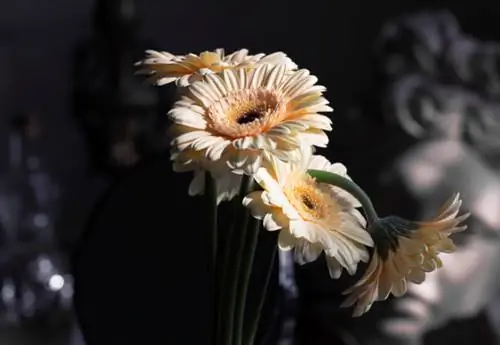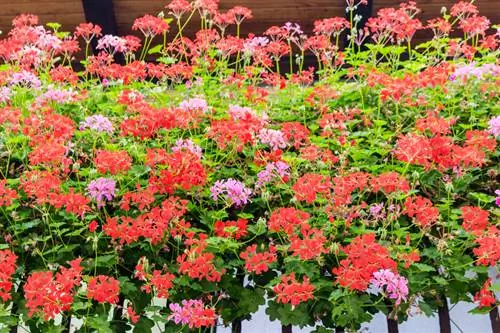- Author admin [email protected].
- Public 2023-12-16 16:46.
- Last modified 2025-01-23 11:21.
Due to its impressive flowers and its distribution in the Mediterranean region, crape myrtle is often referred to as the “lilac of the south”. The shrub, also known as Lagerstroemia after its botanical name, has a large number of small flowers that visually resemble crepe paper, which is popular for crafts.

Are crepe myrtles hardy?
Crepe myrtles can withstand winter temperatures of up to minus 15 degrees Celsius for short periods if well cared for and in a suitable location. In cold regions, pot culture and a cool winter quarter without direct sunlight are recommended to protect the plant from severe night frosts.
Pay attention to the location needs of the crape myrtle
Under suitable conditions, crape myrtle can grow to a maximum height of 5 meters. However, for the plant to bloom lushly, it is essential that the Lagerstroemia receives enough light and heat. In contrast to sensitive exotic plants such as the dragon tree, crepe myrtle does not immediately die in cool or even frosty temperatures. After all, crepe myrtles also grow in exposed locations in various regions of northern Italy. With good care, the various subspecies of Lagerstroemia can withstand winter temperatures of up to minus 15 degrees Celsius for a short time. For crepe myrtle, all fertilization should be stopped from August onwards so that young shoots can harden sufficiently before winter.
The right location for year-round outdoor care
Unfortunately, not every location in Central Europe is suitable for growing crepe myrtle outdoors. Mild locations such as:are generally well suited.
- Wine-growing regions
- coastal regions
- sun-drenched river valleys
It is not only the regional climate that is crucial, but also the exact positioning of the crepe myrtles in the garden. If possible, you should plant crape myrtles in front of a natural stone wall and ensure that there is no shade at all times of the year. The wall directly behind the plants reflects sunlight during the day and also releases stored solar heat into the surroundings in the evening. This makes a location significantly milder throughout the winter without any special effort.
This is what you need to consider when wintering indoors
In colder regions, crepe myrtles should be cultivated in pots and protected from severe night frosts in winter. However, a greenhouse or a heated indoor area tends to be too warm as winter quarters for a crepe myrtle. Rather, storage streams should be moved late to relatively cool winter quarters and wintered out again in early spring. During the winter dormant phase, crape myrtles only need a little water and should only be fertilized again when new growth appears in spring.
Tip
Since crepe myrtles shed all their leaves in winter, they do not need any sunlight in their winter quarters and can also be overwintered in completely dark rooms.






